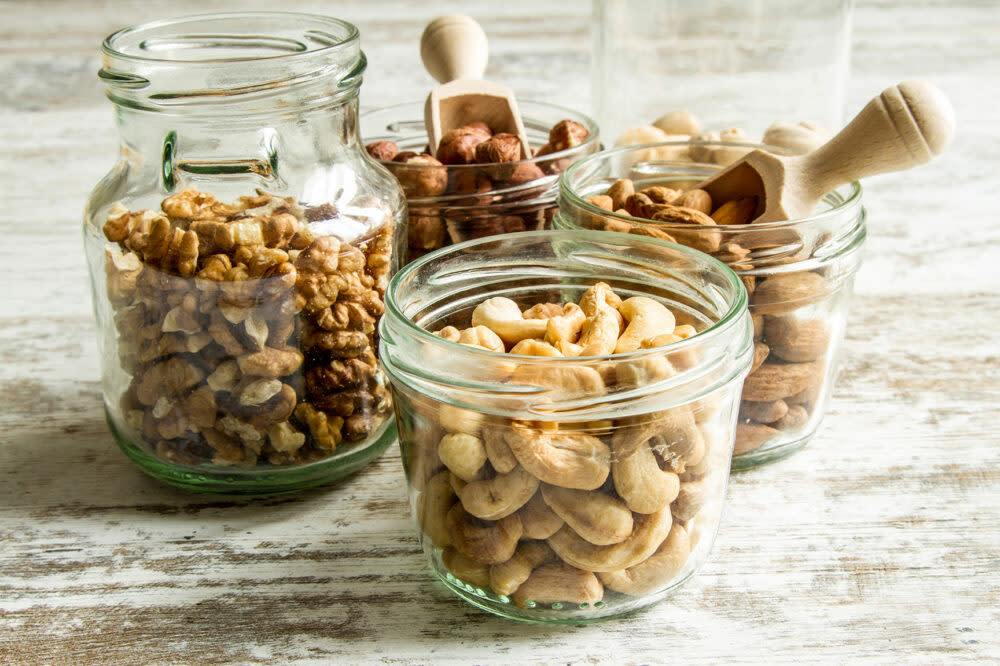The ideas and suggestions written below are provided for general educational purposes only and should not be construed as medical advice or care. Always seek the advice of a physician or other qualified health provider before beginning any physical fitness or health and nutrition related activity.
What if we could help support the health of future generations and the planet just by the food we put on our plates? Our food choices have the power to impact more than just our bodies; they also impact our planet and the people who grow and make our food. A nutritious, sustainable diet is associated with food that 1) provides nourishment, 2) promotes earth health, 3) is accessible and affordable, and 4) is produced in a way that treats people fairly and equitably.
to adjust your cookie settings.
We can all do our part to positively impact the planet and those around us. When it comes to our own kitchens, meal prepping with purpose is one way to get started in building a more sustainable lifestyle. For me, meal prepping is a convenient way to save time and money while reducing food waste. Taking one day of the week to plan and prep my meals helps provide access to nutritious food on days when I need it the most! There is no better feeling than coming home from a busy day of work, opening my fridge, and seeing the ingredients I need to quickly whip up a nutritious meal or snack.

How can you use plant-based diet meal prep to eat more sustainably?
Create a weekly menu and plan your grocery list
Set aside 30-60 minutes to intentionally plan your meals and snacks for the week – lean on a mix of cookbooks, online recipes, social media, and family favorites for inspiration. Emphasize a variety of plant-based proteins, fruits, vegetables, and whole grains in your meals but remember that nutritious and sustainable diets don’t have to be exclusively homemade. Plan out a few easy options for meals and snacks when you know you’ll be running short on time but need balanced options to keep you energized. Use your meal plan to create a grocery list ahead of traveling to the store, so you only buy what you need.
Plan your week to “cook once”
Now that you’ve planned your weekly menu, it’s time to get in the kitchen and prep it! Meal prepping once a week not only saves you time but allows you to simplify home-cooking and reduce food waste. I like to prep different ingredients in a flexible “buffet-style” meal prep system. I prep my proteins, cut up fruits and vegetables and precook any grains or legumes, so I can quickly add different sauces or spices and create delicious and sustainable meals no matter what my schedule throws at me. Alternatively, you can prep full meals and snacks for each day of the week, so you only need to grab food from the fridge and go, or batch cook a dinner recipe one night, so you have leftovers for a few lunches. There is no right or wrong way to do it, just choose the system that works best for you.
Look for simple and sustainable options that fit your lifestyle
Using “shortcuts” as part of your menu planning can help you prep and eat more sustainably. Here are some of my favorites:
Buy in bulk. Less packaging equals less waste! By purchasing items in larger quantities your food naturally uses less packaging material. Take this a step further by visiting your local grocery bulk section to measure out exactly what you need and reuse jars or containers you already have on hand. I love bulk shopping for dried fruits, nuts, spices, and whole grains like oats and quinoa. It helps me stock up on shelf-stable essentials, save money and reduce waste all at the same time.
Make plant-based swaps. Eating a nutritious, sustainable diet starts with plenty of plants. Several studies show that picking plants as the star of your plate can help lower the environmental burden of our food choices and support health and sustainability outcomes.1,2 You don’t have to completely change how you eat to reap the benefits of a plant-based diet. Top your morning cereal with berries and a non-dairy alternative, such as oat or soy milk or choose canned beans or pre-cooked lentils for your next “Bolognese” sauce or Taco Tuesday.
Repurpose leftovers
According to the Food and Drug Administration, around 30-40% of food in the U.S. is wasted. Don’t let your leftovers go to the landfill! When reusing leftovers, use the first-in-first-out (FIFO) method, in which the meals/ingredients that were prepared first are used first. This method helps prevent any unwanted spoilage and ensures you’re eating foods at their peak of freshness. For produce that is looking a little sad or wilted, repurpose by adding it to homemade vegetable broth or freezing for smoothies. Remember, from a food safety standpoint, most foods can only be kept as leftovers for three to four days in the refrigerator.
Spice things up by reinventing your leftover meals. For example, leftover rice can be combined with vegetable broth, herbs and canned beans added to a warming soup, or pre-prepped plant-based protein and veggies can be wrapped in a burrito or scrambled in breakfast omelet-- there are endless creative options! When reheating leftovers, the FDA recommends heating to at least 165 degrees F.
Ready to get started? Use this weekly meal plan and grocery list as a helpful tool to begin your sustainable meal planning journey.
References
Blackstone NT, El-Abbadi NA, McCabe MS, Griffin TS, Nelson ME. Linking sustainability to the healthy eating patterns of the Dietary Guidelines for Americans; a modeling study. Lancet Planetary Health 2018; 2(8); P344-352.
Food in the Anthropocene: the EAT–Lancet Commission on healthy diets from sustainable food systems, 2019.







